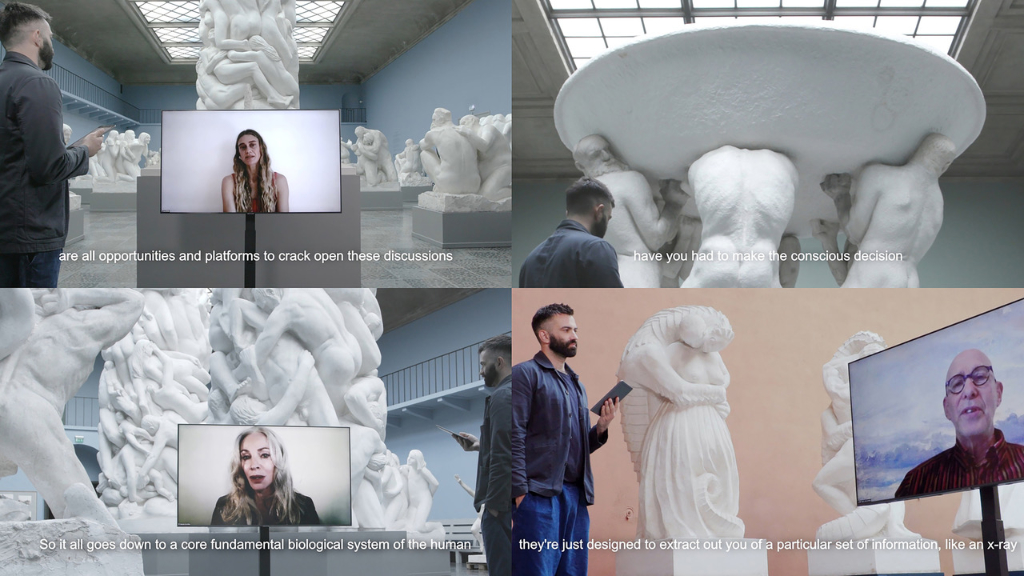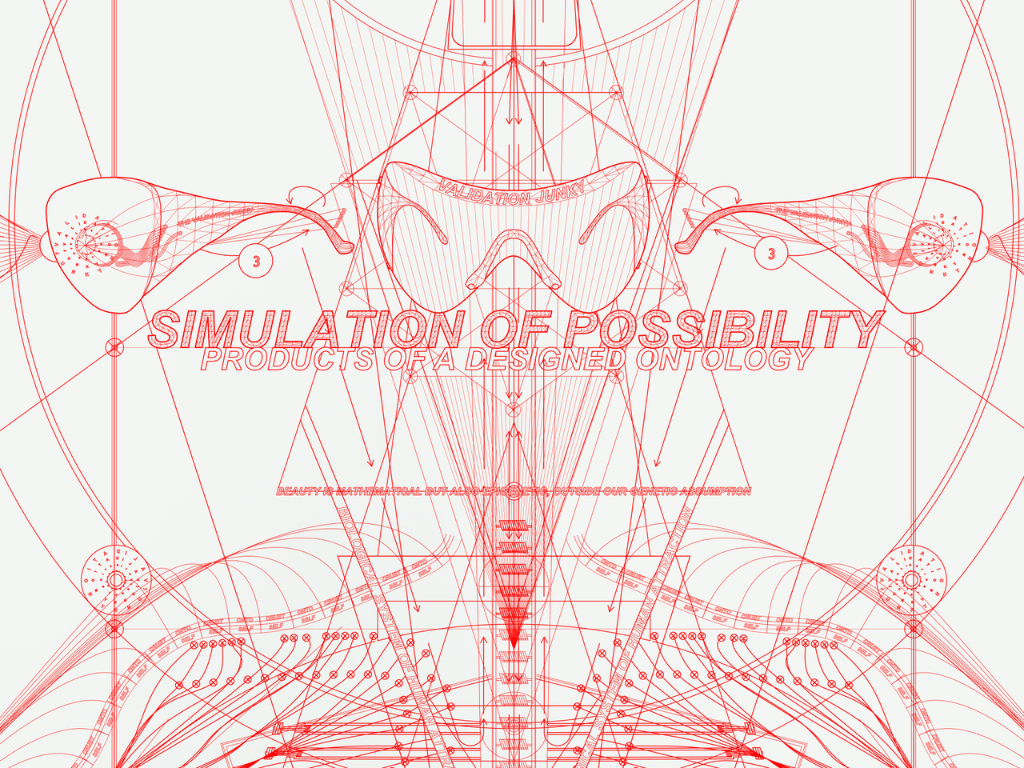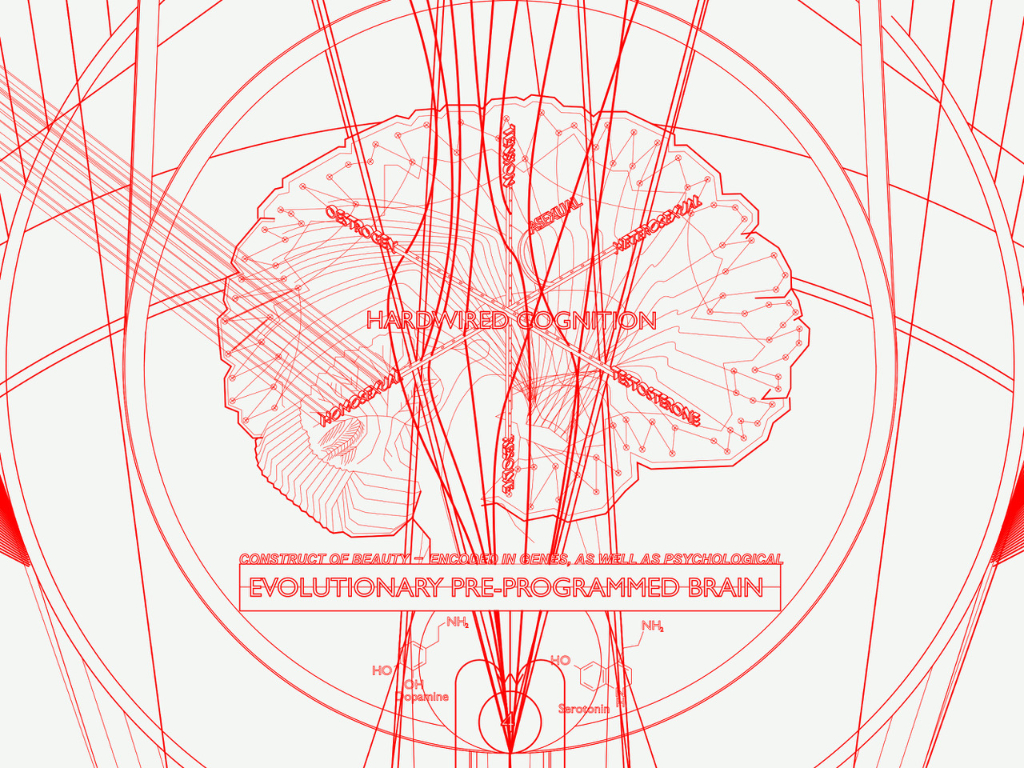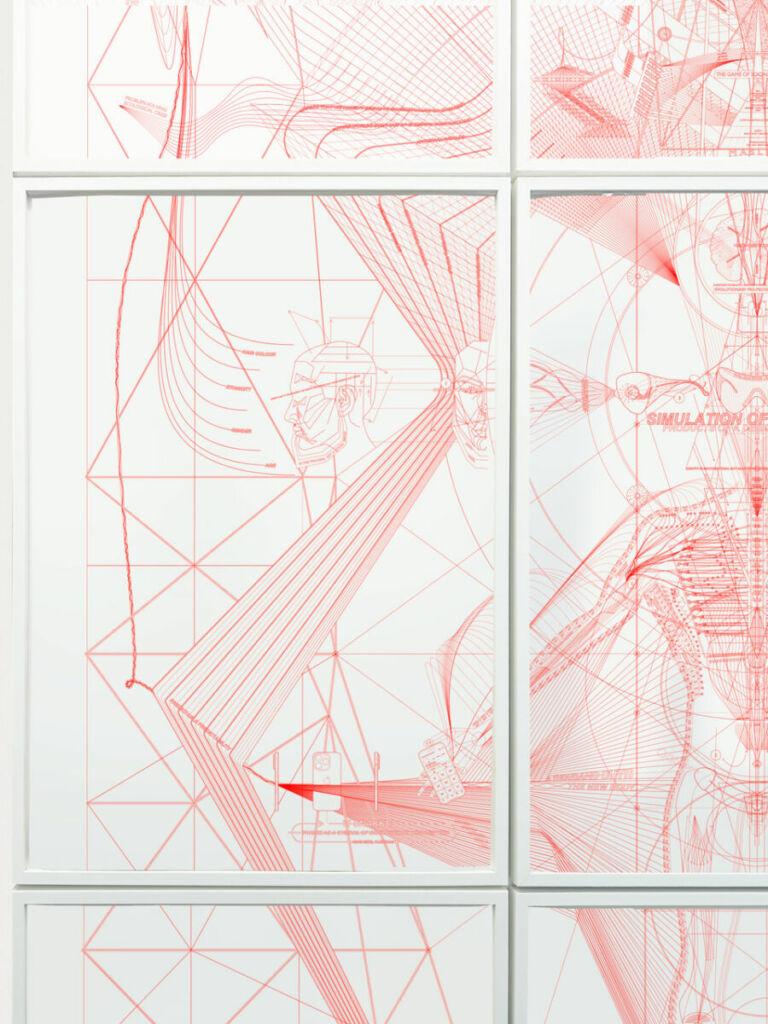Interview by Alessandra Coretti

PERFECTION / SPECULATION is a multifaceted investigation by Adam Peacock that restores a highly complex horizon of meaning – regarding the relationship between human beings and technologies. The project, held in collaboration with PRAKSIS, a centre for art, research and learning based in Oslo, Norway, represents the evolutionary chapter of Genetics Gym (2016-2020), where Peacock conducted an initial analysis of the impact of new media on self-perception.
With PERFECTION / SPECULATION, Peacock expands the research perspective by including the view of experts in the field of new technology applications, such as Natasha Vita-More, Mark Jarzombek, Lev Manovich and Lucy McRae. For Peacock, the project is a kaleidoscope of visions. The purpose is not to create a formula to understand the present, elaborate the past, and predict the future.
PERFECTION / SPECULATION opens scenarios for reflection, problematises them, and allows their complexity, or perhaps it would be better to say their fractal nature, to emerge. Technologies and their large-scale application primarily train our brain not to think in a binary way; they help us to experience contemporaneity free from a rigid and limiting posture (sometimes, without a parachute). Natasha Vita-More proposes a transhumanist vision of beauty based on a conscious use of technology and science to promote a ‘genetic freedom’ that acts with ethics.
Vita-More points out that the penetration of body technology allows the body to be considered a malleable and ever-changing material. This path of corporal re-appropriation and rewriting has distant roots, especially in art. We have seen it in various forms, particularly in the 1990s, when we witnessed a process of radicalisation of bodily expressiveness and rewriting of identity through prosthetics, surgery and genetic engineering. Vita-More’s perspective takes this idea to the next level, providing an integrative viewpoint on using technologies such as nanomedicine and CRISPR/ Cas9 to intervene in the basic structure of our bodies and redesign the possible genetic mutations that cause disease and ageing.
Mark Jarzombek completely changes the focus of the discussion, bringing us into the post-ontological era, in the world of data and algorithms where every human being is radically fractionated and studied for segments. His talk highlights the risks and ambiguities of living in increasingly “intelligent” environments capable of analysing every single action and how the appropriation of these data can make human beings easily predictable or manipulable.
Lev Manovich touches on the possibility of teaching an algorithm to read beauty or sensuality and the ‘perception of genetic strength’. In addition, as an artist, Manovich talks about his approach to social media as a landscape, as a sign of the present, and as an iconographic expression of our time.
Lucy McRae concludes the series discussing the importance of creating interdisciplinary cells and allying art with science and genetics. The aim is not to exclude art, creativity, and design from being able to take positions and indicate paths of vision within the great contemporary debates, such as the responsibility of new media in the elaboration of a preconceived idea of “social body”, i.e. a body that responds to precise aesthetic parameter.
Adam Peacock’s work gives critical three-dimensionality to the crucial cultural, human and technical challenges of our present, which are already charting the coordinates of our future. His artwork is important and necessary to approach the rapid technological evolution- both fascinating and insidious at the same time.






Alessandra Coretti: PERFECTION / SPECULATION is a polyphonic investigation that restores a highly problematised horizon of meaning – regarding the relationship between human beings and technologies. Different ways of ‘ inhabiting ‘ this dialogical space emerge from the specificity and depth of the gazes exhibited in this project. Are there any research perspectives (among those you have covered) that are priorities for your work? How do you express the need for interconnection and permeability between different knowledge and disciplines?
Adam Peacock: PERFECTION / SPECULATION is rooted in the understanding that visual culture within new media affects human behaviour on a vast scale, and developments in this area are happening quicker than they can be studied or legislated. I’m not trying to arrive at concrete answers or solutions to these questions but to engage new audiences in the topics across perspectives, ideologies and specialisms. Within this field, the more you uncover, the more you realise there is to discover. As Mark Jarzomebek mentions in his interview for PERFECTION/SPECULATION, “That’s the trick of postmodernist post-ontology: that our bodies are not designed to feel these cuts operating on us”. Revealing new insights is fascinating; I find it quite addictive.
The project is based on the understanding that new knowledge comes from crossovers between disciplines and borrows methodologies from various fields. I am particularly interested in exploring the space between cybernetics and human biology, its interface with computer systems and observing the science of culture.
I draw on the observation of large data sets to create experimental artworks through iterative graphic experiments, such as ‘An Ontology For a Fragile Male Ego’ (2021), which takes form in large-format visualisations of sculptural interfaces exploring new biological and cultural principles behind new media as a tool to investigate realities within human behaviour and its effect on shaping lived human experience today. It is fascinating to pursue new frameworks that allow me to analyse human cultural interfaces and the tools of post-disciplinary design-led artistry.
Alessandra Coretti: The work deals with some critical points regarding the use of technologies. For example, with Natasha Vita-More, an integrative and constantly regenerative approach to the human body (nanomedicine, CRISPR) is presented. At the same time, the Transhumanist Manifesto has emphasised the importance of developing an ethical use of technologies. On the other hand, I think of Mark Jarzombek’s talk, which points out how the continuous analysis and appropriation of our data leads to homogenisation of our identities. Are there some boundaries or zones of vulnerability that need to be preserved? Could technological development be supported by developing a new individual and collective consciousness?
Adam Peacock: The development of new technologies should be rooted in asking questions on what constitutes a utopian and dystopian future, considering a broad range of perspectives and ideologies. Technology manufacturers speculate on the futures we might like to live out through their designed infrastructures, and we choose to opt in or opt out of them by buying their hardware and using their software and services; the attention economy is an example of this.
Every technological development comes with potential positives and negatives. This is where the power of art comes into play – it can develop new conversations on desirable futures. I hope that the continued development of artistic practices within this field will lead to a larger and more accessible consciousness and that this, in turn, will inform the consumer trends that technology hardware and software manufacturers respond to.
Alessandra Coretti: The whole project is filtered through an idea of architecture as a paradigm of vision that interfaces with other “forms of intelligence. The need for interdisciplinarity is often emphasised, especially with Lucy McRae. How has your background influenced the development of the project? What is your idea of architecture today?
Adam Peacock: I consciously work between existing disciplines and enjoy the transience and tension that sits alongside the discomfort within the ‘old’ definitions of disciplines, categorising your thinking into boxes such as ‘fashion’, ‘architecture’, and ‘art’. The methodologies I work through are primarily learned from the study and practice of architecture but apply to the broader sphere of art and design and the philosophy of applied technology – to be applied to everything from vehicle, industrial, product, and fashion design. All strong design processes follow a similar format of observant cultural analysis, research, and synthesis into a designed outcome using a chosen, finessed design medium.
As a student in London, we were taken on a research trip to Bilbao, where we were tasked to observe a building or sizeable civic infrastructure and draw what we would see if we cut it down the middle. It’s impossible to see what’s in the middle of that sizeable civic building, so it leaves a great deal for you to speculate on what might be there.
You create informed decisions based on careful observation and looking at past precedents within the literature of engineering and scientific papers. This way of working has formed the basis of the drawing series that I continue to iterate through within my work, starting with The Validation Junky (Royal College of Art 2014) to The Validation Junky 2024 (Valideringssøppel) (RAM Galleri 2023), as a synthesis of what was learned from PERFECTION / SPECULATION.
The drawing is an imagined section through a sculpted human anatomy, interconnected with an infinitely delicate system of new media, complex ontologies, philosophical elements and a mix of magic, poetry and artistry.
Architecture is primarily the design for containing human life, with old societal infrastructure within urban planning and placemaking, new spaces for human activity existing within the internet, and new media within an ontological infrastructure. The field and study of architecture, urban planning, fashion, product, vehicle and industrial design are all subject to contemporary forces of new media adjusting and adapting to new human behaviours.
When designing these objects, the best products won’t just follow trends, ‘make the screen bigger’, etc. It’s important to consider how new technologies might improve the human experience of their lives through this product. The development of technologically infused design across specialisms is far more philosophical due to the way we live in the Post-Ontological.
Alessandra Coretti: The video interviews were conducted at the Vigeland Museum, one of the project partners. Places, especially in this case, are never neutral and aseptic contexts. What type of resonance did you want to activate between the physical space and the project concept?
Adam Peacock: In 2019, curator Danai Papadimitriou introduced me to Nicholas John Jones, who is the Founder and Director of PRAKSIS, a centre for art, research and learning based in Oslo, Norway. We started exploring ideas around what the Genetics Gym project (Fashion Space Gallery) would look like if we plugged the research themes and topics into Norwegian cultural ecology through a group residency in Oslo.
The residency PERFECTION/SPECULATION was born as an open framework to investigate genes, memes and the modifiable body through practice and research. Through an international open call, we brought together nine residents coming from Canada, England, Hong Kong, Iran, Israel, Northern Ireland, Norway, and Sweden across fields of architecture, ceramics, digital body design, fashion, filmmaking, photography, and sculpture to join the project over the summer of 2021. The PERFECTION / SPECULATION research group includes Marte Aas, Jonathan Armour, Louis Alderson-Bythell, Trinley Dorje, Erika Stöckel, and Bobby Yu Shuk Pui.
In exploring a Norwegian historical reference point for bodily depictions, Nicholas suggested Gustav Vigeland, Norway’s most prominent sculptor, who lived between 1869 and 1943. The Vigeland Museum is dedicated to the life and work of Vigeland, housing over 1600 sculptures of bodies, with particular emphasis on the beauty and complexity of the human spirit from life to death through humour, tension, despair, sorrow, and love.
I was grateful to have the Vigeland Museum collaborate on PERFECTION / SPECULATION, reminding us that body cultures are historical and current and that dialogue into affectations on bodily aspirations and depictions are still-lingering concepts inherited from body cultures of the past.
The video interviews were designed as a multi-level body investigation, with interviewees appearing as digital bodies on screens, recorded alongside my own (biological) body, amongst a sea of Vigeland’s sculpture body forms in plaster; three layers of bodily illustration through digital, biological and sculptural.
Our conversations, spanning New Media, Ontological Systems, Transhumanism and Genetics, were future-facing whilst referencing Vigeland’s works, exploring new technologies’ effect on human form, asking the question, ‘What would a Vigeland work look like if it was made today?’. I wanted the films to be seen and observed as a work of art in their own right—a tapestry of voices to paint a depiction of the invisible forces at play behind identity today.
The gallery installation, curated by Nicholas John Jones and Kristian Schrøder, is designed so that the audio of PERFECTION / SPECULATION can be heard alongside viewing the large format drawing The Validation Junky 2024 (VALIDERINGSØPPEL). The large drawing has been constructed as a synthesis of what was learned and explored within insights found within the research investigation, so components will resonate directly with the audio channel played.
Alessandra Coretti: PERFECTION/SPECULATION is a new chapter of the Genetics Gym project (2016-20). Do you predict possible evolutions of the project? Are there other artists, scientists, designers or radical thinkers you would like to involve in the ongoing discussion?
Adam Peacock: The Genetics Gym project (2016-20) took my research in directions I could have never imagined existed, amongst them, leading me to meeting PRAKSIS and to the creation of PERFECTION / SPECULATION; and with RAM Galleri and PRAKSIS, the exhibition The Validation Junky.
I’m interested in dialogue, exchange, and collaboration with the companies that craft the technologies that currently provide the infrastructure, both in hardware and software, for post-digital identity inhabitation – Alphabet, Apple, Decentraland, Meta, Snap Inc., Roblox – alongside those in government that craft the legal frameworks that define technology policy. People need to work in the grey spaces between industries to develop new knowledge and the frameworks necessary to establish, uncover and probe new knowledge.





